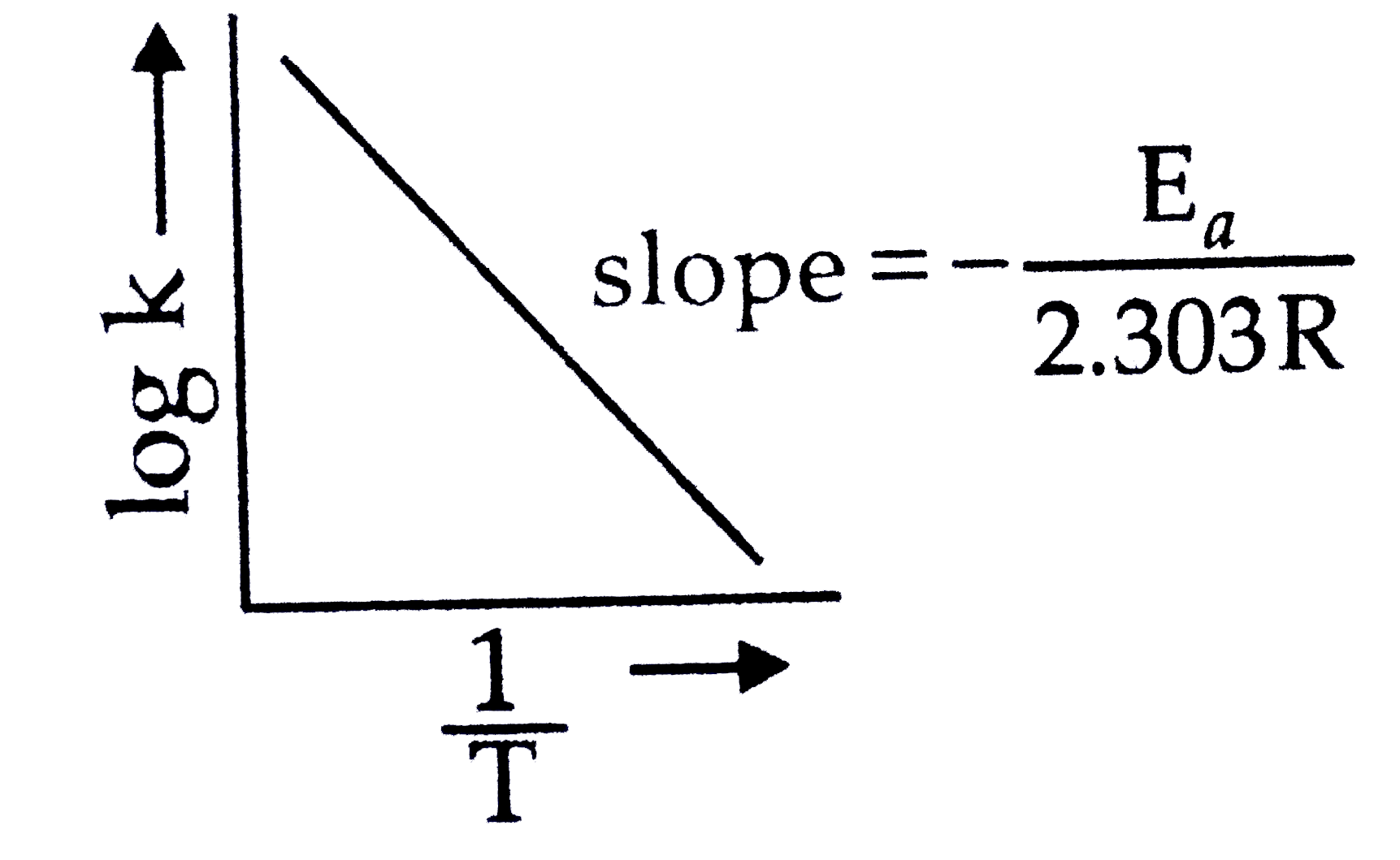When a plot of log k versus 1/T of chemical reaction is made, the energy of activation is given by the slope of straight line
A
obtained
B
multiplied by + 2.303 R
C
multipiled by -2.303 R
D
divided by +2.303 R
Text Solution
Logarithmic form of Arrhenius equation is :
log k=logA−Ea2.303RT×1T
It is a straight line equation (y= c + mx)

slope =−Ea2.303RorEa=slope×(−2.303R)
|
Topper's Solved these Questions
Similar Questions
Knowledge Check
In a plot of log k vs 1/T, the slope is
A−Ea/2.303BEa/2.303RCEa/2.303D−Ea/2.303RIn a plot of log k vs 1/T, the slope is
A−Ea/2.303BEa/2.303RCEa/2.303D−Ea/2.303RIn a plot of log k vs 1/T, the slope is
A−Ea/2.303BEa/2.303RCEa/2.303D−Ea/2.303R
The graph between logk versus 1/T is a straight line.
View SolutionIn a plot of log.k vs 1/T, the slope'is :
View SolutionStatement: The Arrhenius equation explains the temperature dependence of rate of a chemical reaction.
Explanation: Plots of logK versus 1/T are linear and the energy of activation is obtained from such plots.
View SolutionA plot of k vs 1/T for a reaction gives the slope −1×104 K. The energy of activation for the reaction is:
View SolutionThe plot of In k versus 1T is liner with slope of
View Solution
